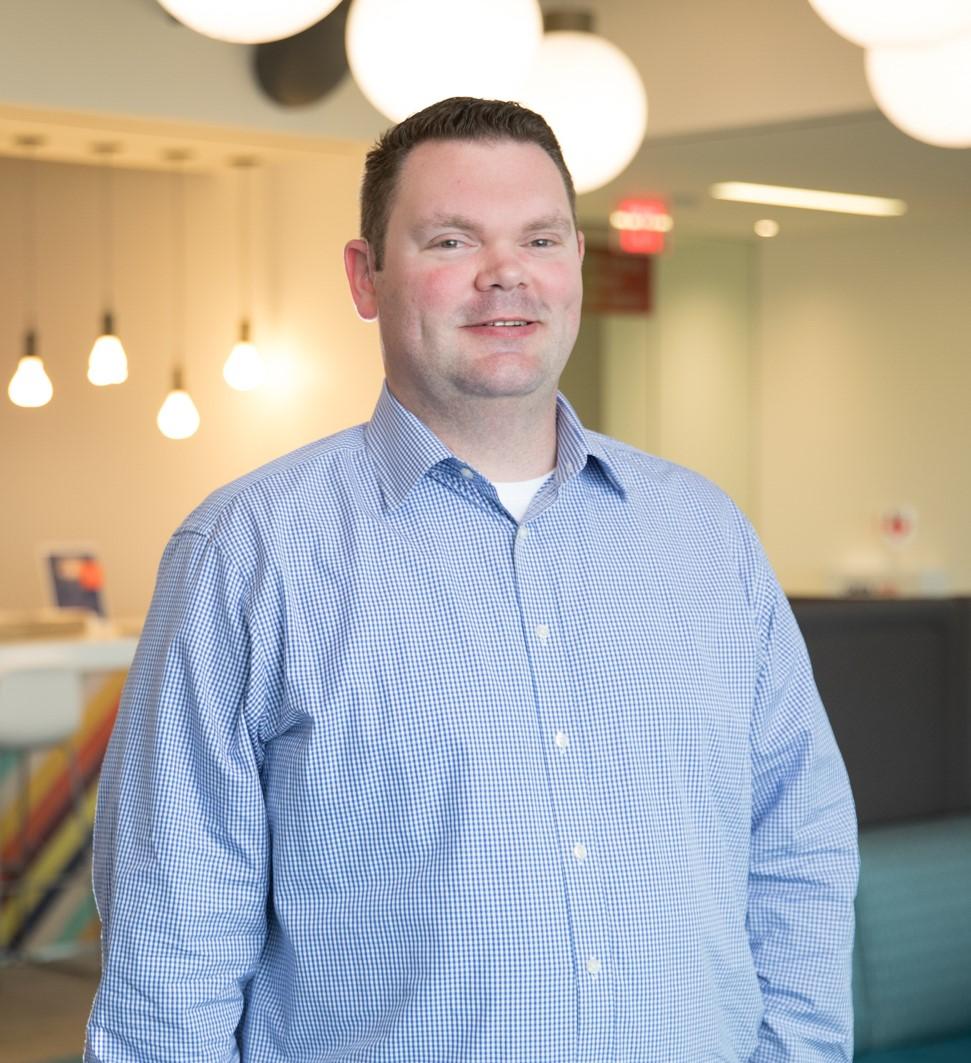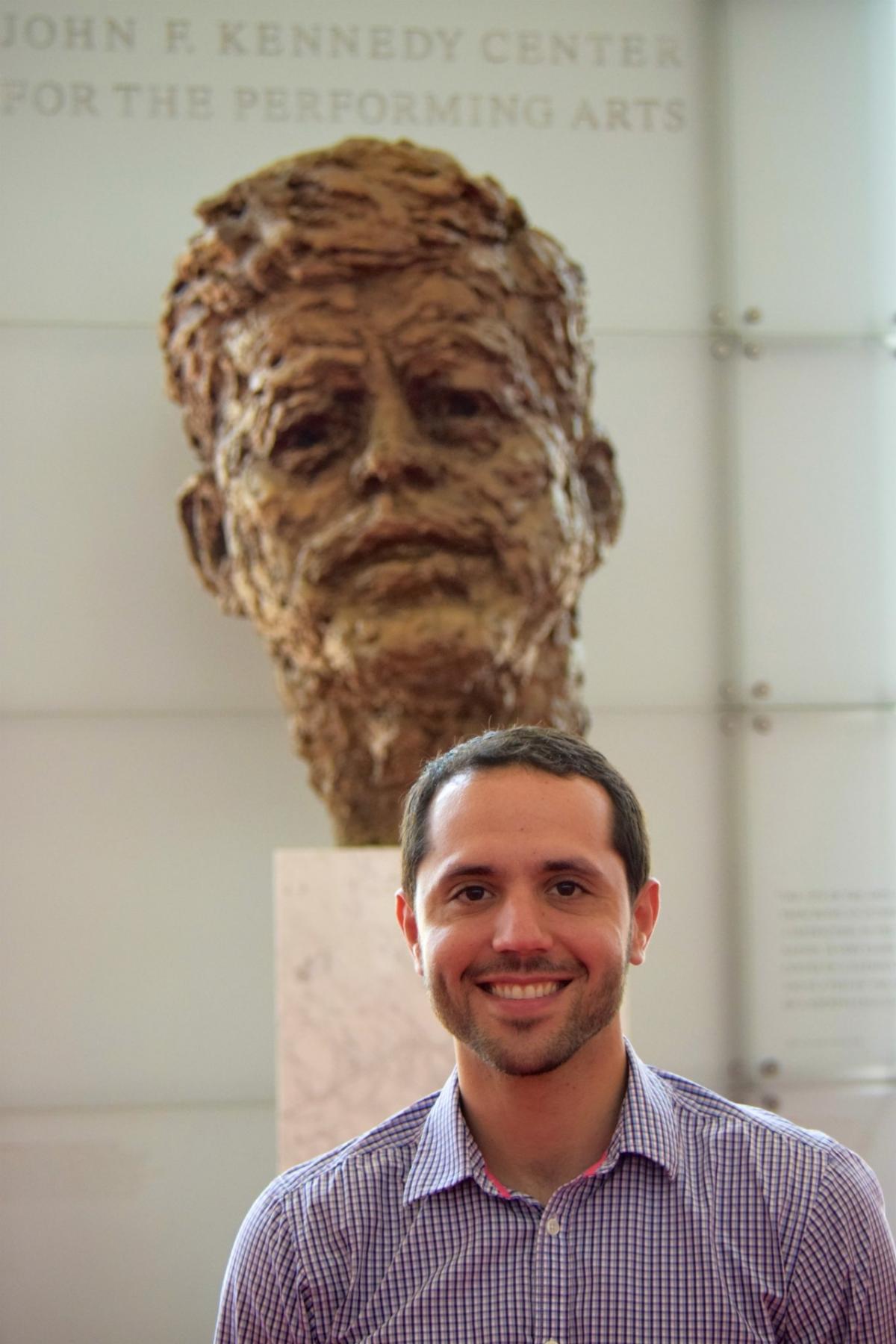How Two Deaf Booz Allen Employees Deal with Challenges on the Job and During COVID-19
Before he graduated from George Washington University (GWU) with a master’s degree in public health, Chris Khanoyan volunteered to work for the Livestrong Foundation by driving his own vehicle to provide transportation for patients affected by cancer. That was when the obstacles of being deaf truly hit him. As the driver with patients, he was unable to read lips or speak with them. He struggled to communicate and fully connect with the patients he transported to and from the hospital.
“It was very hard for me and them. I couldn’t provide enough comfort, assistance, or help. That stays with me to this day,” he said.
Dan Hamilton received his big shock soon after graduating from high school. “Like many others, I wanted to serve my country and join the military. I was stunned when I was told, ‘You’re deaf, you can’t join.’ It crushed me,” he said.
Today Khanoyan is a lead scientist on Booz Allen’s health account and Hamilton is a lead associate on Booz Allen’s internal audit team. Both recently joined Booz Allen’s Global Disability Business Resource Group (BRG) virtually for a panel discussion recognizing the 75th anniversary of National Disability Employment Awareness Month.
Why Booz Allen
Khanoyan and Hamilton shared their stories in a virtual discussion moderated by Eric Wright, lead technologist and BRG co-chair who has frequently talked about his experiences with cerebral palsy, and BRG Co-Chair and Consultant Eli Hinson, who recently shared her own story about accessible technologies.
Khanoyan came to Booz Allen through a recruiting event, “a speed dating interview with my interpreter,” in his words. He soon realized the community was very supportive and would meet his needs.
For Hamilton, “I knew deaf employees who said that they had great experiences,” he said. “Booz Allen has a good name in the community.”
On the job, both use a variety of tools and resources to communicate, including email, video conferencing, chat and messaging applications, captioning, transcripts, and interpreters—both in-person and via video.
Connecting during COVID-19
This year, the pandemic and the virtual world of work brought fresh challenges.
For example, when you rely on sign language and facial expressions, masks—though a public health necessity—complicate matters. “People often think I am rude because they say something with their mask on, and I don’t know that they are trying to speak with me,” said Khanoyan.
Virtual meetings can also be tricky. Khanoyan said he sometimes finds it harder to jump in and participate. “Interpreters struggle to interrupt so I can weigh in, and often I give my response after that part of the conversation has passed.”
Hamilton agreed. In video calls, he said, “It’s hard to view my interpreter and concentrate on the meeting.”
“I love interacting with people,” Hamilton said. “COVID-19 has impacted me as a person, not just as a deaf person.”
Continuing to innovate, adapt, and thrive
On the flip side, COVID-19 has accelerated the adoption of some helpful technologies—like transcripts, video captioning, and digital collaboration tools.
Many Booz Allen videos and events now have captions, Hamilton noted. Captioning and transcripts can be helpful to people who don’t have disabilities as well by giving them the opportunity to read and listen at the same time.
Booz Allen continues to innovate and adapt in the current environment to best serve its employees—via internal efforts and through key partnerships. Khanoyan cited Disability:IN, with whom he served as a mentor. “It’s a great way to learn about products and services and learn from other people,” he said. The organization recently awarded Booz Allen a 100% score for the sixth year in a row as part of its annual Disability Equality Index.
Additional resources and support for employees who might need accessible technologies—not just during a remote work situation—can be provided via the firm’s Global Disabilities BRG and the Disability Accommodation and 508 Leadership teams.
How else can employees be supported best by managers?
-
Educate yourself on resources available at the firm to assist employees with disabilities.
-
Connect employees with subject matter experts who can help review and facilitate assistive technology tools and other accommodations they may need.
-
Communicate: let employees know your door is always open.
-
Build trusted relationships through conversations of the right type at the right time—and let the employee guide the conversation.
-
Keep in mind an employee might not immediately know what they need for accessible tools and technologies, and that needs can change over time.
-
Simply asking “How can I help” is a good place to start.
-
Be cognizant that while an employee might have accessible technologies and resources, barriers can occur due to technology or resource limitations.
Read more about the Booz Allen Global Disabilities Business Resource Group (BRG) and diversity, equity, and inclusion at Booz Allen.



